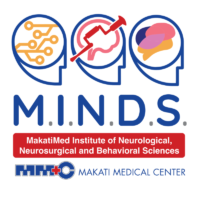Deep Brain Stimulation (DBS)
What is DBS
DBS therapy uses a small, pacemaker-like device, placed under the skin of the chest, to send electrical signals through a very thin wire (lead) to an area in the brain that controls movement, which blocks the abnormal nerve signals that cause symptoms.
DBS has been approved by the Food and Drug Administration as a treatment for essential and Parkinsonian tremor and since 1997,[3] and for Parkinson’s disease (PD) since 2002. There has been over 20 years of studies demonstrating its safety and efficacy in movement disorders.
If you are a candidate for DBS, the pre-screening involves a series of evaluations, procedures, and consultations before and after the actual operation. Individuals interested in being treated with DBS should be prepared to commit time to the process.

For Parkinson's disease (PD)
Individuals with PD who may benefit from DBS are:
- Those with uncontrollable tremor for whom medications have not been effective.
- Those with symptoms that respond well to medications but who, when the drugs wear off, experience severe motor fluctuations and dyskinesias, despite medication adjustments.
- Those whose movement symptoms might respond to higher or more frequent medication doses, but who are limited to do so because of side effects.
DBS is a treatment, not a cure for Parkinson’s disease. The cardinal symptoms of PD such as tremor, rigidity and stiffness, and slowness, all respond vey well to deep brain stimulation. Other non-motor symptoms such cognitive changes, anxiety and depression, autonomic fluctuations, speech, and sleep may not improve as greatly.
If you are a candidate for DBS, or would like to explore its as an option, consult with your movement disorders neurologist.
For Dystonia and X-linked Dystonia Parkinsonism (XDP)
There are many different kinds of dystonia. For individuals with a primary dystonia, DBS may reduce the disorder’s characteristic involuntary muscle contractions that cause such symptoms as abnormal posture, repetitive movements, or twisting.
X-linked dystonia parkinsonism (XDP), also known as lubag syndrome or X-linked dystonia of Panay, is progressive movement disorder endemic to the Philippines. The first case of DBS in XDP was done in 2007, with many cases thereafter to the present.
DBS is not a cure for XDP, and even after surgery the disease may still evolve or progress to a parkinsonian state. Neverthless, studies have shown that GPi DBS for XDP is the most efficacious treatment available for XDP, greatly reducing, and in some cases eliminating, dystonic symptoms.


For Essential Tremor
DBS targeting the thalamus can improve the involuntary movement of the arms, hands, and head that is associated with essential tremor.
Other DBS therapies
Other FDA approved indications for DBS include Obsessive-Convulsive Disease and certain specific types of Epilepsy. Your primary specialist physician will be able to advise you, and refer you if you are candidate.
Upcoming indications include major depression, Tourette’s, and some pain syndromes.


